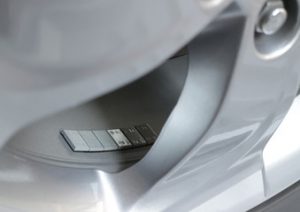Don’t Let Your Tires Go Out of Balance: The Importance of Tire Balancing
Have you ever wondered why your car sometimes experiences vibrations or uneven tire wear?
Just like snowflakes, no two tires are exactly alike. Even the slightest weight differences can cause issues, affecting your vehicle’s performance and safety. That’s where wheel balancing comes into play! When your tire and wheel assembly is balanced it ensures a seamless, smooth ride. From vibrations to uneven tire wear, is this guide we will discover why tire balancing is the key to unlocking a smooth and safe driving experience.
What Is A Tire Balancing?
The objective of tire balancing is to ensure an even distribution of weight throughout the tire’s circumference. A technician will mount your tire and wheel assembly onto a specialized balancing machine. This machine simulates the tire’s rotation on the road by rotating it and detecting vibrations. Using these measurements, the technician carefully assesses the weight distribution and makes precise adjustments. Tiny weights are strategically added or adjusted, affixed to the wheel to achieve the desired balance. In some cases, the technician may need to reposition the tire on the wheel assembly to address larger weight imbalances. This meticulous process ensures that your tires are perfectly balanced, leading to a smoother and more stable driving experience.

Wheel weights mounted to a rim.
How Do You Know If You Need A Tire Balancing?
Determining whether your tires need balancing can sometimes be a tricky task. The signs might not always be glaringly obvious, and they can easily be mistaken for other issues like worn-out suspension. The key lies in knowing what to keep an eye out for and seeking guidance from your trusted local Signature Tire when in doubt. Don’t let the subtle clues slip by unnoticed – we’re here to help! The key factor is that when a tire is heavier on one side it will exert a greater force on the road, this can result in:
- Vehicle Pulling: If your car insists on going in its own direction when you want to travel straight.
- Uneven Tire Wear: Uneven weight distribution will cause certain areas of the tire to experience more friction and wear compared to others.
- Shaking Steering Wheel: If your steering wheel starts shaking while you’re driving.
How Often Should You Rebalance
The frequency of tire rebalancing depends on various factors, including driving conditions, tire quality, and individual vehicle characteristics. As a general guideline, it is recommended to have your tires rebalanced every 8,000 to 10,000 kilometers. However, it is a good idea to have your tires rebalanced every time you have them rotated. Your shop may also offer this service when changing seasonal tires (winter to summer and vice versa), and an initial balancing will be offered on all new tire purchases as an install & balance package.
It is also ideal to have your tires rebalanced if you damage your tires weight balance, for example hitting a curb, pothole, debris, or need to have a flat repaired.
Maintaining The Balance
- Regular Inspections: Keep a close eye on your tires for any signs of imbalance, such as vibrations or uneven tire wear. If you notice any of these symptoms, it’s important to have your tires balanced promptly to prevent further problems.
- Scheduled Maintenance: Follow the manufacturer’s recommended maintenance schedule for tire rotation and balancing. Regularly rotating your tires helps ensure even wear and can prevent imbalances from developing over time.
- Avoid Road Hazards: Be mindful of road hazards like potholes, curbs, and debris. Hitting these obstacles can cause tire imbalances. Whenever possible, steer clear of these hazards or drive cautiously to minimize the impact.
- Proper Inflation: Maintain proper tire pressure as recommended by your vehicle manufacturer. Underinflated or overinflated tires can lead to uneven wear and affect balance. Regularly check and adjust tire pressure to the recommended levels.
- Professional Service: When it’s time for tire balancing, trust the expertise of a qualified tire professional. They have the specialized equipment and knowledge to accurately balance your tires and ensure optimal performance.
By following these maintenance practices, you can help preserve tire balance, extend the life of your tires, and enjoy a smoother, safer ride. Remember, a balanced set of tires goes a long way in enhancing your driving experience and maintaining the overall performance of your vehicle.

